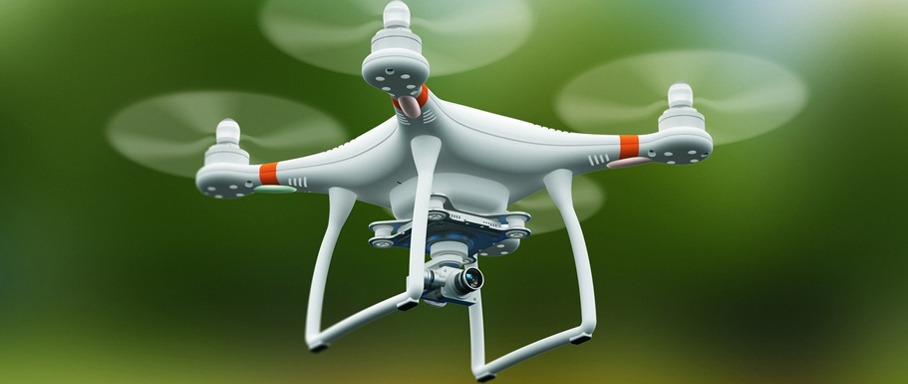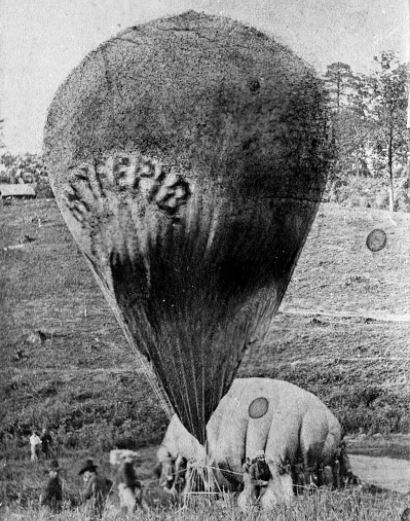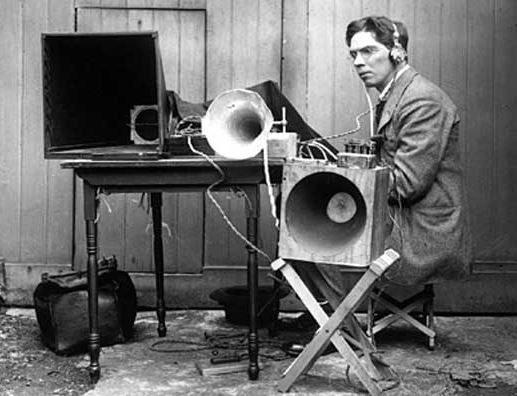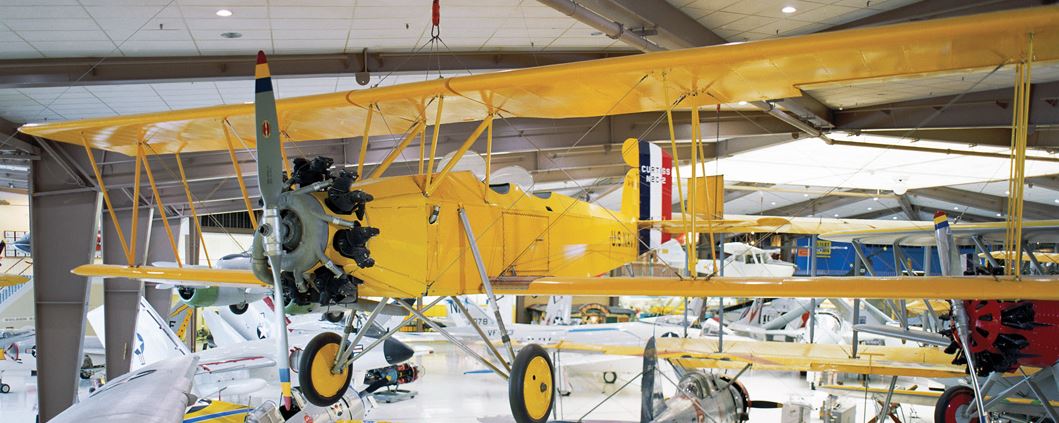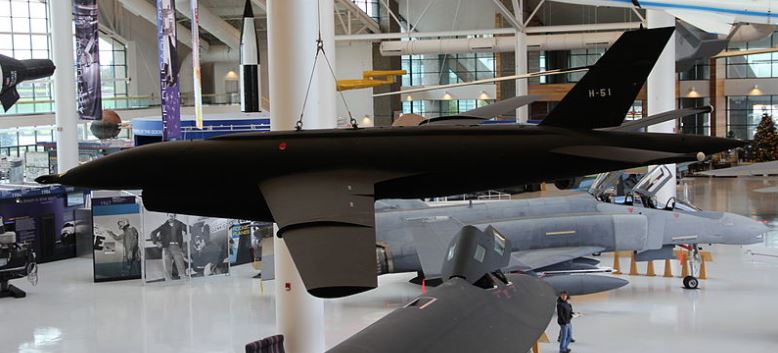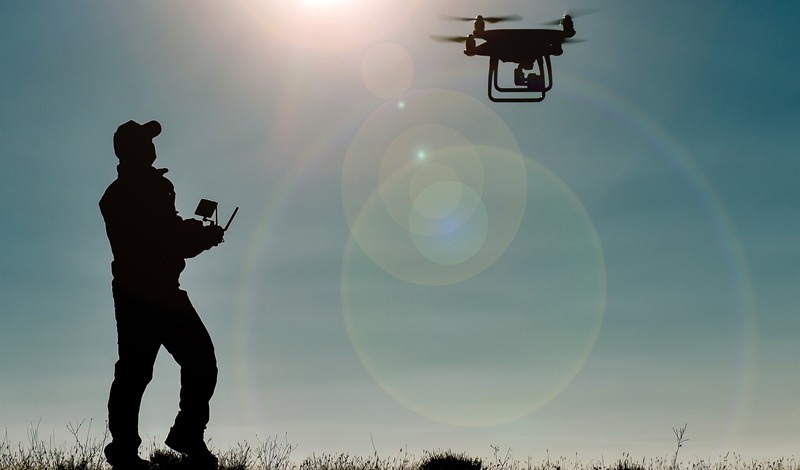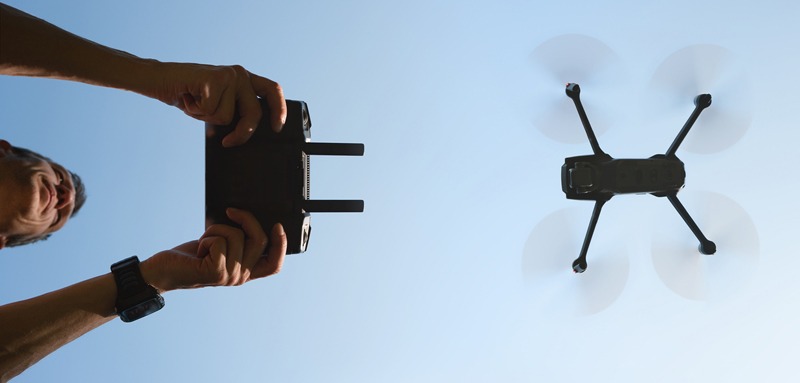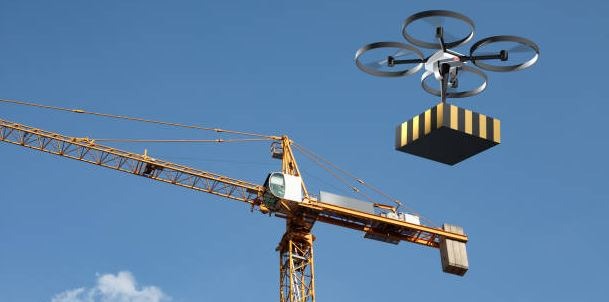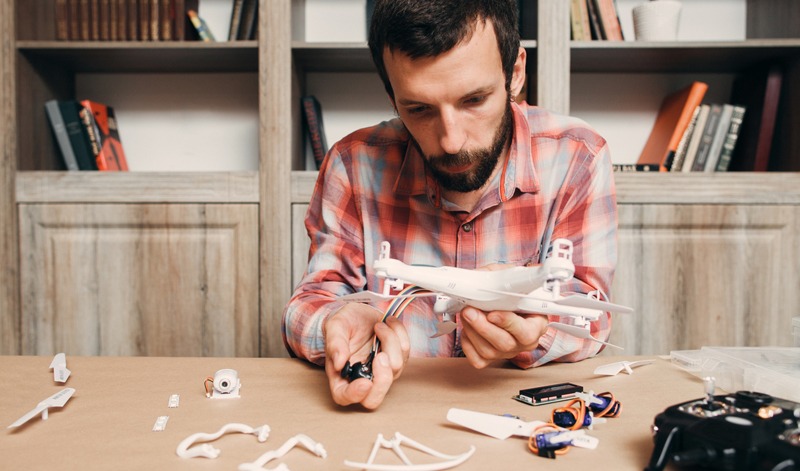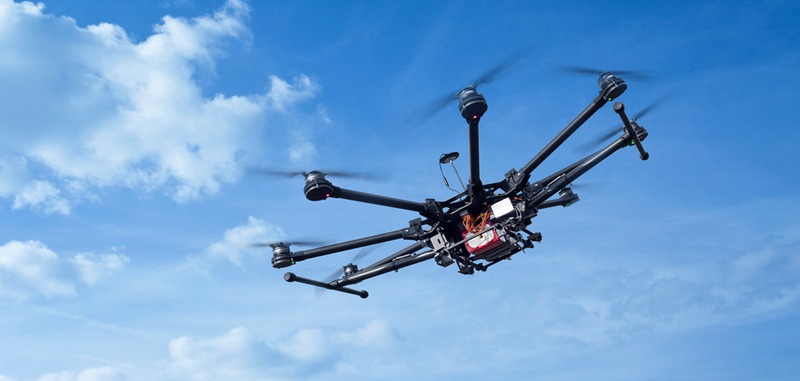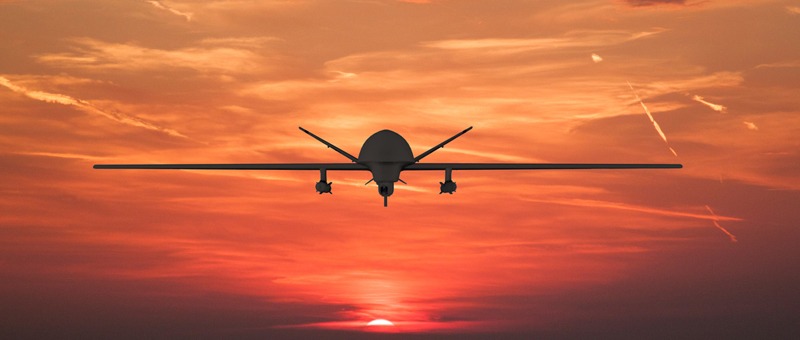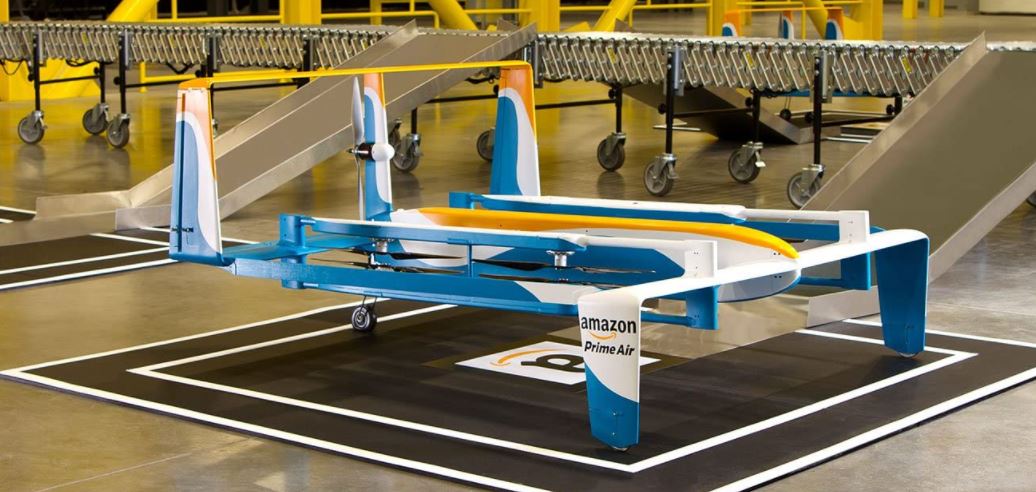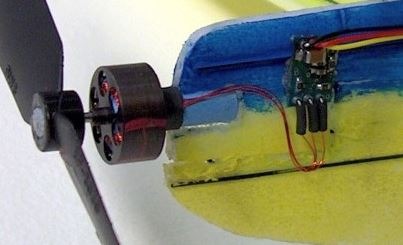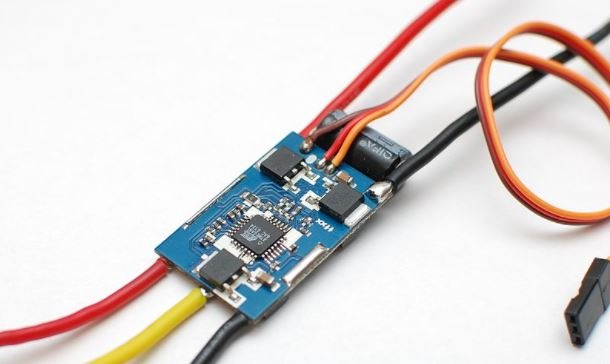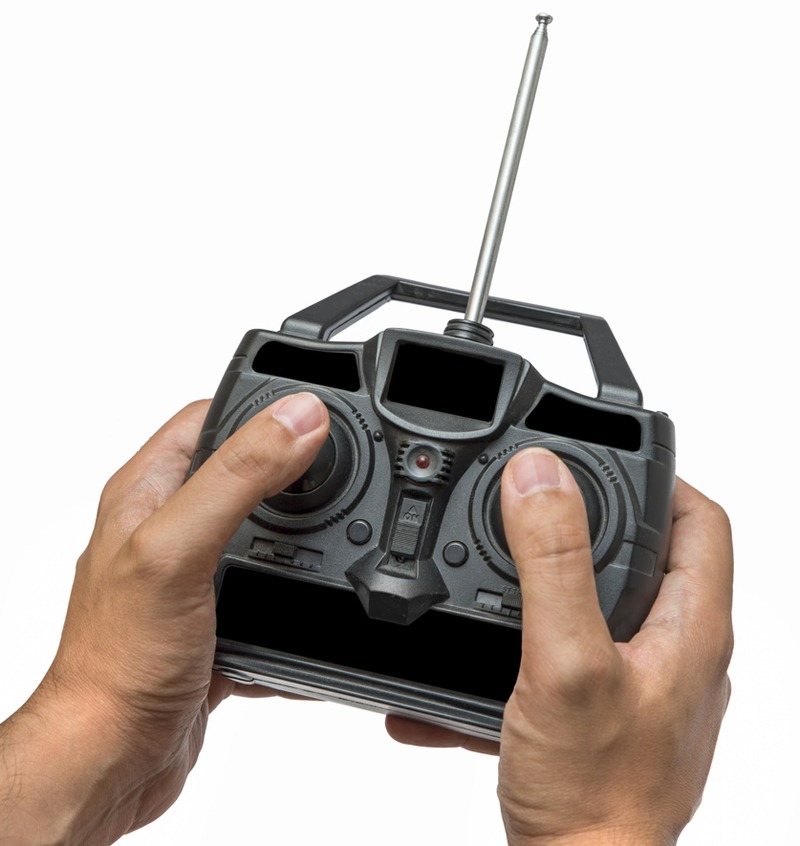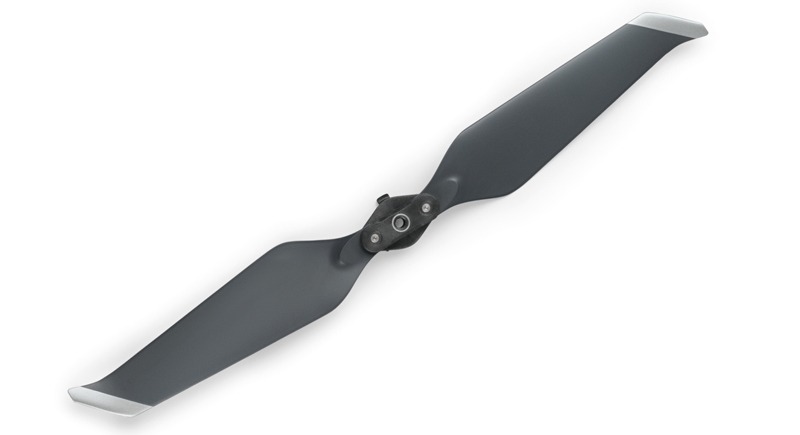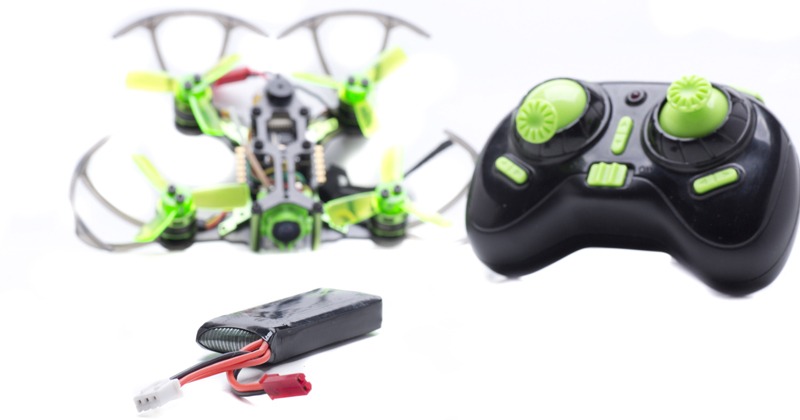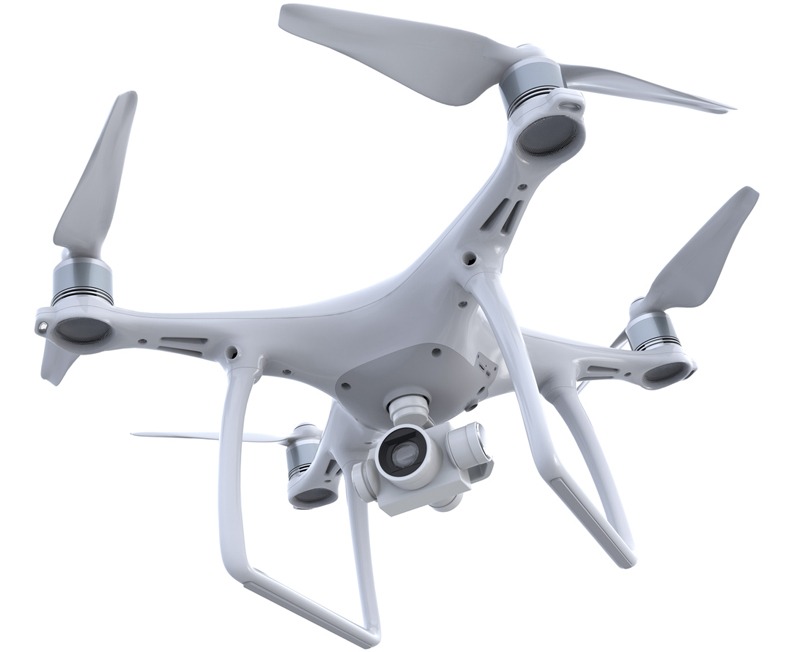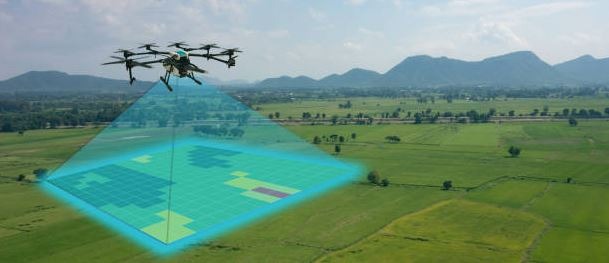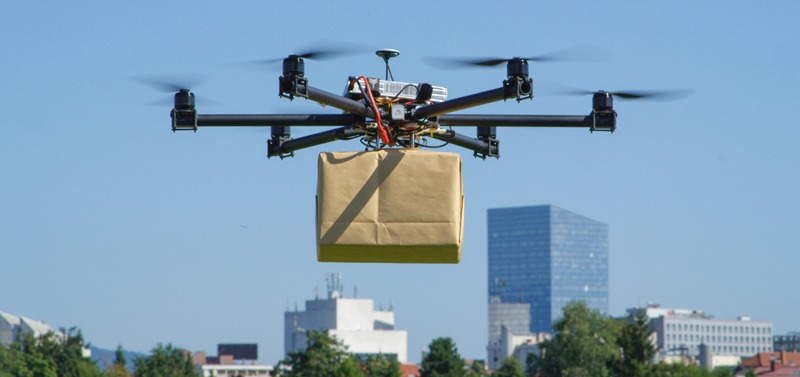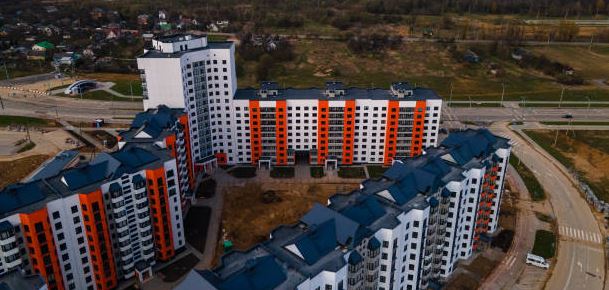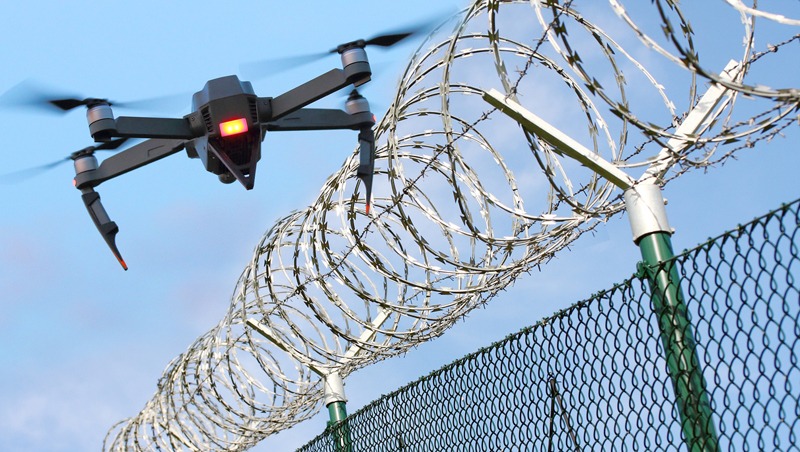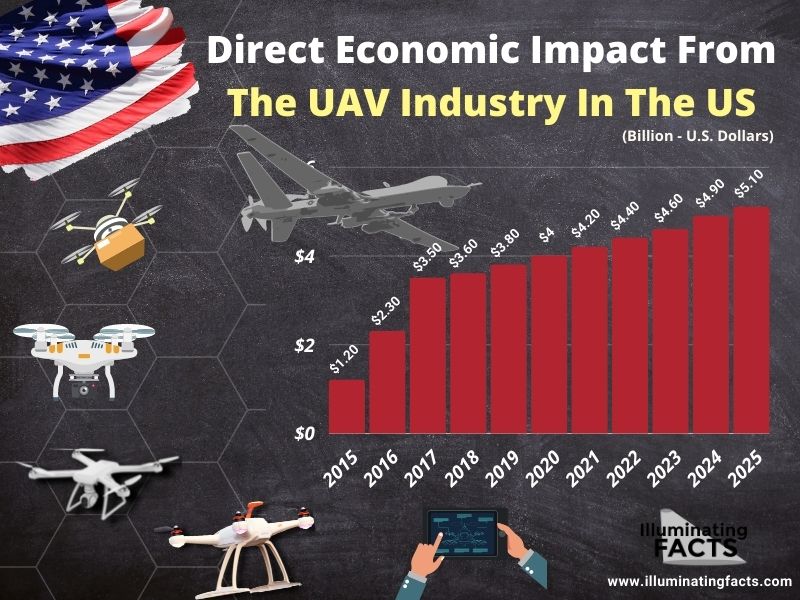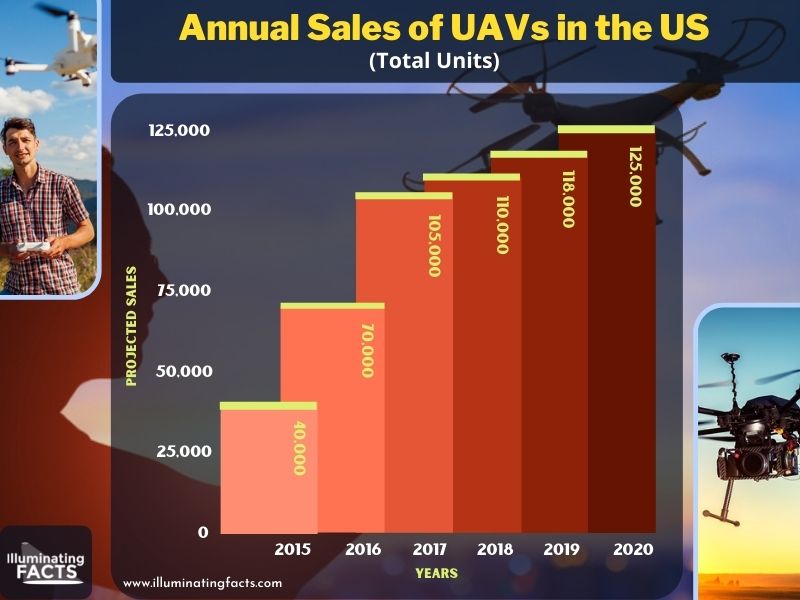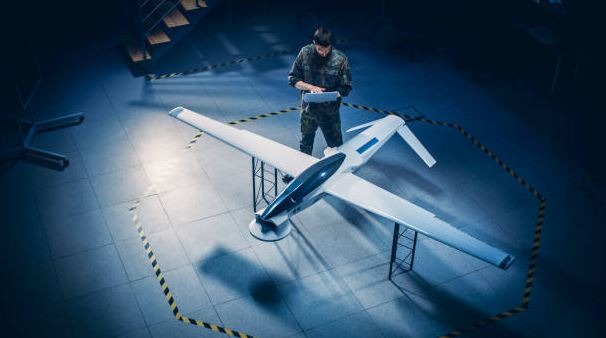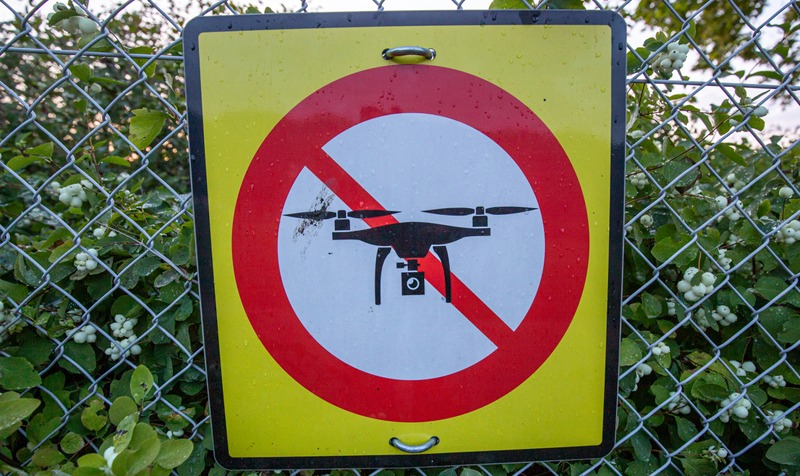Table of Contents
Introduction
A drone is an unmanned aerial vehicle (UAV) that has become one of the hottest gadgets in today’s world. What are they, why do people belonging to different fields prefer them, and how have they evolved to what they currently are? We will learn all this and much more about them in this detailed guide.
In simple words, a drone is a flying bot that you can easily control via your smartphone, tablet, or a dedicated remote controller. Drones are programmed to fly autonomously through a set of codes running inside their chips or, in technical terms, their embedded systems. Modern drones can do much more than we can imagine, thanks to today’s cutting-edge technology, sensors, GPS, and build material.
Background and History
Before being used by today’s filmmakers, vloggers, and photographers, drones were limited to military use only for various purposes, including surveillance. But now, they have so many applications in several industries, such as medical, entertainment, logistics, agriculture, and the list goes on. The military used drones for not just surveillance but also for remotely deploying missiles on a specific area by assigning GPS coordinates to the drones.

Helicopter rotor
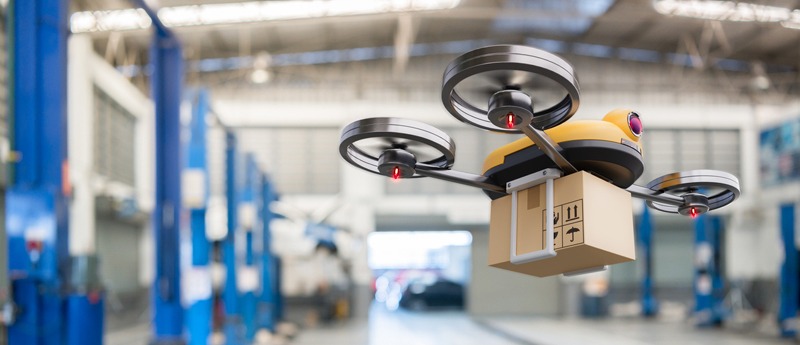
Spare part delivery drone at garage storage in leading automotive car service center
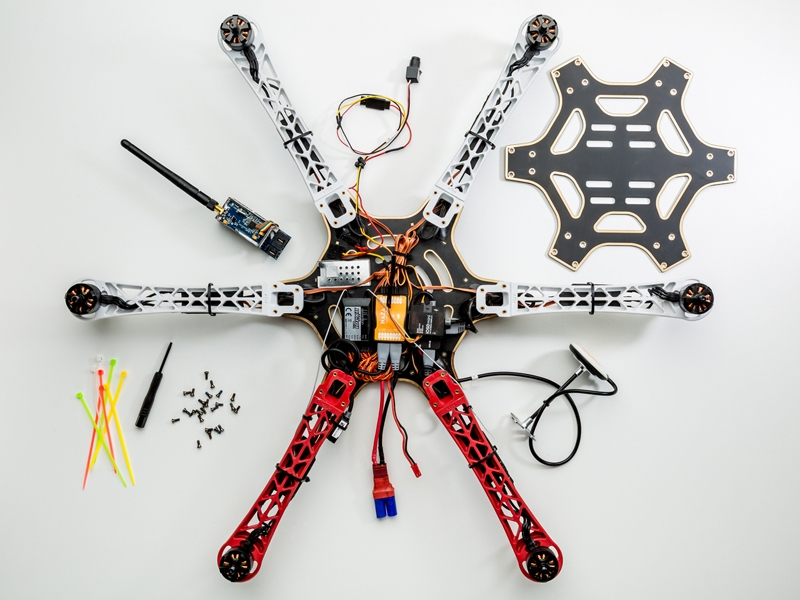
Building a hexacopter drone
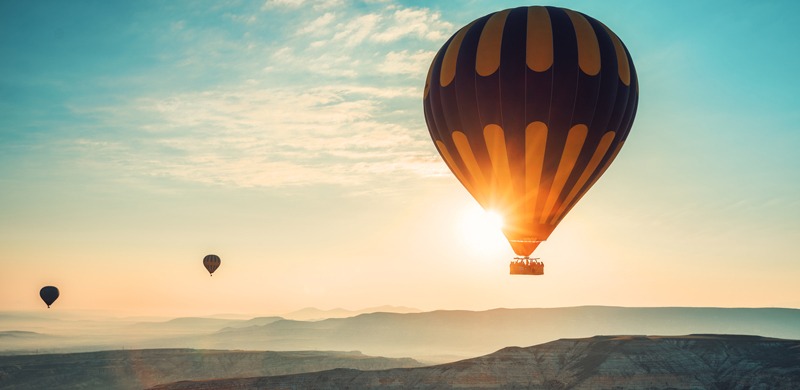
Hot air balloons flying over the valley at Cappadocia
According to the International Institute for Strategic Studies (IISS) data, the US Army has about 678 drones of various types in service[1]. According to the Federal Aviation Administration (FAA), 519,933 recreational and 342,357 commercial drones have been registered in the USA (September 2021)[2].
Historical Timeline of Earlier Drones
1783 – The First UAV Was Introduced
Interestingly, the first UAV wasn’t the flying copter that we see today. It was nothing but a simple hot air balloon that you might have seen in several movies. From a technical perspective, UAVs don’t have a pilot on board, which makes hot air balloons the first-ever UAVs.
The first public demonstration of a UAV was hosted in Annonay, France, by Jacques-Étienne Montgolfier and Joseph-Michel.
The Mid-1850s – Earliest Military Drones
After the first public demonstration of hot air balloons (UAVs) in the 1780s, they were, for the first time, used to attack Venice in 1849. The Austrian Army filled explosives in these hot air balloons and launched them all over Venice to besiege it. About 200 of these hot air balloons were launched at the time. Fortunately, only one balloon out of them hit the mark while others failed and were blown off course due to a sudden change in the wind direction.
Although hot air balloons don’t meet the criteria of today’s UAVs, it is interesting to see that the concept of autonomous air vehicles was first considered by militaries about 170 years ago.
Early-1900s – Introduction to the First Quadcopters
The quadcopters we see today were first conceptualized in the early 1900s. Two French brothers, Louis Bréguet and Jacques developed Gyroplane with the help of Professor Charles Richet, a French physiologist[3]. Although it was controlled by an onboard pilot, the French brothers unveiled the concept of quadcopters to the world, which later on evolved into what we call today an unmanned aerial vehicle.
1915-1920
The first actual unmanned aircraft was developed in 1916, called Ruston Proctor Aerial Target. These drones featured a radio guidance system made by a British engineer, Archibald Low. With the help of a team consisting of 30 men, Archibald launched Ruston Proctor Aerial Target from the back of a truck using compressed air.
After a year of research and hard work, Archibald and his team developed the first electrically-steered rocket. The same technology was also used by the Germans in World War II for their V1 rocket program[4]. While Germans and Brits were deep into drone tech, the Americans didn’t want to fall behind, so they researched this technology and made the Kettering Bug. This unmanned aerial torpedo used gyroscopic controls and was launched from a four-wheeled dolly.
1930-1945
After the end of World War I, drone technology was growing by leaps and bounds. In 1937, Curtiss N2C-2 Drone was invented by the US Navy after experimenting with radio-controlled aircraft.
However, the most notable use of drones was when the German Army used the V-1 “Doodlebugs” to launch missiles. The army fitted them with pulsejets and used them in a campaign of terror bombing various British cities, including London. The autopilot systems of these drones were programmed to control their altitude and speed. In addition, these drones featured gyroscopes to control their yaw and pitch.
Later on, the US reverse engineered the same technology and built their first pulsejet-powered UAV, Curtiss KD2C, and the TD2D-1 Katydid[5] [6].
1950-1960
At the beginning of the Vietnam War, the US military found drones quite useful in avoiding the deaths of pilots during aerial combats with enemies. By the end of the Vietnam War, the US Army invested much in drone technology, made high-tech drones, and used them in various missions, including throughout Vietnam.
These drones served various purposes, such as acting as decoys in combat, launching air missiles against fixed targets, dropping leaflets, etc.[7]
1980-1995
During the 1980s to 1990s, the US Department of Defense signed contracts with Israel-based MALAT and AAI Corp to develop advanced drones. In 1995, MQ-1 Predator was invented, an American UAV, for the Central Intelligence Agency (CIA) and the United States Air Force (USAF).
After some years, in 2007, MQ-1 Predator paved the way for the MQ-9 Reaper, an armed, multi-mission, remotely piloted aircraft. Its major purpose was to collect intelligence data and execute targets dynamically[8].
2001-2006
As a part of the war on terror, the CIA started flying drones all over Afghanistan. An unmanned Predator was used in 2002 to kill a suspect in Afghanistan who the US Army thought to be Osama Bin Laden. However, the suspect turned out to be Daraz Khan, an innocent man. Such unfortunate events lead to reliability issues regarding drone technology.
However, in 2006, realizing the true potential of drones other than their military applications, the FAA issued the first commercial drone permits. Due to this, some limitations that recreational drones had to face were also reduced. This step paved the way for many professionals, including architects, photographers, videographers, filmmakers, and several organizations, to learn more about drones and use them for various purposes.
2010-2020
In 2010, the first ready-to-fly drone, called Parrot AR.Drone was released. It could be controlled using a smartphone via Wi-Fi.
In 2013, DJI, a popular drone manufacturing company, introduced Phantom 1, which marked the entry of the first-ever camera-equipped drone on the commercial market. After 3 years of Phantom’s success, DJI launched Phantom 4 and Mavic Pro in 2016, two of the most professional drones available on the market back then.
DJI made sure to introduce drones that were way ahead of their time and competition. Therefore, they equipped their latest drones with machine learning and smart computer vision. These technologies allowed DJI drones to avoid obstacles and track various objects/subjects.
In 2016, Facebook introduced and flew its first solar-powered drone, but it crashed after being airborne for some time. After 1 year, Facebook worked on it and relaunched it, but this time it remained airborne for 1 hour and 45 minutes and safely returned to the base unharmed.
In 2018, DJI launched Mavic Air, which was a huge success for the company. Also, a startup, Zipline, introduced its first medical delivery service that provides services to more than 10 million people and 1,000 clinics all over Tanzania[9].
In 2019, American police departments started using drones for search and rescue missions, thanks to thermal imaging technology. Moreover, drones were also used to analyze car crash scenes.
During the 2020 coronavirus outbreak, drones were of great help in providing medical supplies to remote areas without human contact, mass disinfection, and enforcing social distance.
Types of Drones
You can find various types of drones on the market, so to make it easy for you, let’s divide them based on two aspects: Body Structure and Wing Types.
Types of Drones: Based on Body Structure
1. Ready to Fly (RTF)
As the name suggests, RTF drones come pre-built straight out of the package. All you need to do is take it out, connect it to a controller, and take it for a flight. The best thing about these drones is that they are easy to use, cheap, and an excellent choice for beginners and kids.
2. Bind N Fly (BNF)
The only difference between RTF and BNF drones is that BNF drones need to be connected to a controller as they don’t come with one. You can buy a suitable hobby-grade remote controller for these drones. However, unlike most RTF drones, BNF drones are more advanced in terms of specifications and features.
If you already have a remote controller and are looking to update your drone, BNF drones are a good option.
3. Almost Ready to Fly (ARF)
ARF drone kits come unassembled. Therefore, you need to have basic knowledge of various parts (we will discuss them soon) and how to assemble them correctly. These drones are for professionals who know what they are dealing with. But if you have a good knowledge of drones and their parts, you can take help from the instructions manual these kits come with to assemble them easily.
The best thing about ARF kit drones is that you can find their parts on the market if any of them get damaged.
Types of Drones: Based on Wing Type
1. Multi-Rotor
These drones feature multiple rotors and can be further classified based on the number of rotors. For example, tricopter (three rotors), quadcopter (four rotors), hexacopter (six rotors), and so on. These drones are used by both professionals and hobbyists alike for photography, videography, surveillance, etc.
Professional multi-rotors can range from $500 to $3,000 US dollars, while the ones for hobbyists can range from as low as $50 to a couple of thousand US dollars.
Out of all the wing types, multi-rotors are the easiest to fly. However, they are not a suitable choice for large-scale projects, such as long-distance aerial mapping.
2. Fixed-Wing Drones
Fixed-wing drones, unlike multi-rotors, are equipped with wings just like airplanes. Once airborne, they don’t have to utilize energy to stay stable; hence they provide a longer flight time. Most fixed-wing drones are equipped with electric motors that give them a flight time of 2 hours (average). On the other hand, if they are equipped with gas-powered engines, they can provide up to 16 hours (or more).
These drones are best for long-distance operations, such as mapping or surveillance. However, the downsides of fixed-wing drones are the higher costs and skills required to fly them. Unlike multi-rotors, a net or parachute is required to land them on the base safely.
3. Single Rotor Helicopters
These types of drones look similar to helicopters in terms of design and structure. They have a big rotor on the top and a small one on the tail to control the movements. In aerodynamics, the lesser the rotors, the lesser the spin will be[10]. Therefore, single rotor drones are much more efficient and stable than multi-rotor drones.
However, they are not easy to fly like quadcopters, and their higher costs are a major drawback. If you want a drone to hover over an area with a heavy payload, a single rotor drone would be the best option to go for. Moreover, they require a lot of regular maintenance due to their engines and complex mechanical structure.
4. Fixed-Wing Hybrid VTOL (Vertical Take-off and Landing)
A fixed-wing hybrid VTOL drone combines all the features and functionalities of a fixed-wing drone along with the ability of a multi-rotor to hover over an area. Hybrid VTOLs don’t require a runway or catapults to be launched.
However, these drones are still under development, so the current ones you may find are just fixed-wing drones equipped with vertical motors. Over time, the hybrid fixed-wing VTOL drones will have been perfected and evolved. Although a few of these drones are available currently, we can expect more to be introduced soon. One popular example of VTOL drones is Amazon’s Prime Air delivery drone.
Basic Controls of Drones
1. Roll
A drone is rolled by pushing the right stick on your smartphone screen or remote controller to the right or left. To avoid any obstacle or perform a stunt in the air, you can roll your drone left or right.
2. Pitch
A drone is pitched by pushing the right stick on your smartphone screen or remote controller forward or backward. Doing this will tilt your drone in the backward or forward direction – wherever you point the stick.
3. Yaw
You can yaw a drone by pushing the left stick on your smartphone stick or remote controller left or right. Doing this will rotate your drone left or right so you can change its direction during a flight.
4. Throttle
To increase and decrease the throttle of your drone, you have to push the left stick forward and backward, respectively. When you throttle using the stick on the remote controller, the motor(s) adjusts the height and altitude of the quadcopter and gives you a forward/backward moving speed.
5. Trim
If the pitch, roll, or yaw settings seem a bit uncalibrated or off-balance to you, you can use the trim buttons to adjust them.
6. Rudder
The rudder is another term used for the left stick of the controller. It refers to controlling the yaw movement of a drone.
7. Aileron
Aileron is another term used for the right stick of the controller. It refers to controlling the roll movement of a drone.
8. Elevator
Elevator is another term used for the right stick of the controller, but it refers to controlling the pitch movement of a drone (forward and backward direction).
Learning the basic controls of a drone is basically learning how to fly it (covered in detail below). Once you know these controls and find the right way to use them together, you will have a smooth flying experience.
The harder you move the sticks, the stronger the movement of your drone will be. So, if you are a novice, push the sticks on the controller gently, so the drone takes smooth and slow movements; otherwise, you might lose control and end up breaking your drone.
Important Parts of Drones
1. The Frame
The frame is the basic building block of a drone without which it cannot fly. It connects all the components in a way so they can work together efficiently. A drone’s frame is most commonly in the shape of ‘Y’ or ‘+.’
2. The Motors
The motors are the heart of a drone. With even one motor not working, your drone won’t be able to fly well as it won’t spin the propellers. A quadcopter usually has four motors on each of its four sides. One motor powers one propeller.
The higher the KV rating of the motor, the faster it will spin. KV is often quoted in Runs per Meter (RPM) per volt. For example, if your drone is rated 1,500 KV and working on a 10V supply, it will rotate under 15,000 RPMs (without payload).
To build your own drone, you need to get the right type of motor for better performance.
3. Electronic Speed Control (ESC)
Electronic Speed Control or ESC are devices that allow the controller to control and adjust the speed of the drone. For example, if you push the left stick forward, it will signal the ESC to increase the speed, and ESC will raise the voltage as required, thus changing the speed of the propellers. The same is the case when you want to decrease the speed.
4. Flight Control Board
A flight control board is the brain of a drone without which it won’t be able to perform any action. It is responsible for controlling almost all the components, including accelerometers and gyroscopes. Hence it decides how fast a motor should spin under a specific situation.
Moreover, this essential component also makes a log of the takeoff location so in case it loses the GPS signal, or the battery dies, it can return to the location unguided.
5. Radio Transmitter
A radio transmitter (RX) is the remote controller of your drone. It sends signals to the onboard receiver and instructs it on what operation to perform. All this happens in milliseconds because even a little lag may cause a lot of damage.
6. Propellers
Propellers are the blades of the drones installed to provide a difference in air pressure so the drone can fly stable, rotate, and move in any instructed direction. When you roll, pitch, or yaw a drone, the propellers cut through the air, creating a difference in air pressure between the bottom and top of the drone.
Propellers are available in various materials to choose from, including plastic and carbon fiber.
7. Battery, Electronics, and Power Distribution Cables
Drones equipped with electric motors work on battery power while the ones that have engines in them work on fuel (gas or petrol). A set of batteries are used to provide power to all the electronic components of a drone through power distribution cables.
8. Charger
A hobby or recreational drone that is powered via batteries uses a charger to power up the batteries. You must always keep the charger in your drone bag as the battery life of most hobby drones is very short, and it can die on you anytime.
9. Camera
Most drones today come equipped with high-quality cameras, while on some, you have to do it yourself (the best ones are GoPro action cameras). Along with a camera, a drone might also feature a built-in gimbal to provide stable and smooth footage to the users.
Major Industries that Use Drones
1. Agriculture
Modern drones are used to collect information about large farmlands to monitor their health, crop health, water use, heat spectrum, soil analysis, and much more. When drones were not mainstream, inspecting and monitoring large agricultural areas and aerial inspections cost a lot.
A drone equipped with thermal imaging technology can easily tell modern farmers how crops are growing under certain growing practices[11]. In addition to inspecting land and crops, drones are also used to spray pesticides and fertilizers without requiring labor.
2. Delivery
Drones are also being used to deliver the parcel to different areas without requiring a delivery person. Big companies like Amazon and DHL are all ready and set to launch their drones in the air that can provide same-day delivery and that too quickly.
Once everything is sorted out, delivery drones will be very useful in areas where it is difficult to travel by roads or take a lot of time, for example, islands or hilly areas.
3. Emergency Services
The best way to save a life is by providing first aid without wasting time. Ambulances and emergency service providers may not be able to reach on time; therefore, drones come in handy. Drones are being used to provide first aid and medicines to stranded victims and remote areas where traveling by road is time-consuming. Moreover, drones can quickly reach disaster scenes and inspect the damage to allow the emergency teams to plan accordingly.
4. Warehousing and Inventory Management
Drones are used by large organizations and companies to monitor their giant warehouses and check their inventory. One of the biggest supermarket chains, Walmart, has been testing the capability of drones to inspect their warehouses and find out what items are missing[12].
5. Real Estate
Any professional realtor will understand the value of presenting the property in a way that shows every aspect of it. And what better there is than using a drone to take high-quality photos of properties from different angles? In addition to photos, realtors can also shoot high-quality aerial videos of properties to show the vicinity and property layout.
6. Security Services
While there is no replacement for security guards for reliable protection, they can be provided with tools, such as a drone, to increase their performance and monitoring capabilities on the job. A human eye can see to a certain limit, but a drone can view far more than a human eye and even a CCTV camera.
7. Media
The media industry is huge. Several news channels and production companies use high-quality drones for news coverage and film shooting from above the ground. Previously, only big news agencies could afford helicopters and provide aerial footage to the viewers, but with drones becoming mainstream nowadays, every news agency can broadcast aerial footage.
In addition, people are even using drones to market their businesses and brand in the air, which looks interesting and works great in grabbing attention.
Following are some more applications of drones:
- Weather Forecast
- Sports Broadcast
- Energy Sector
- Airports and Airlines
In Numbers
Top Markets for Drone-Powered Solutions
Total Market Value of Drone-Powered Solutions | US$127.3bn³ |
Infrastructure | US$45.2bn |
Agriculture | US$32.4bn |
Transport | US$13bn |
Security | US$10.5bn |
Media & entertainment | US$8.8bn |
Insurance | US$6.8bn |
Telecommunication | US$6.3bn |
Mining | US$4.3bn |
Source: PwC[13]
According to the data gathered by Pricewaterhouse Coopers (PwC), the infrastructure/construction industry is investing more in drone-powered solutions and drone technology. They use drones for surveying and inspecting construction sites. The drones used by the infrastructure/construction industry feature downward-facing sensors, such as thermal or LIDAR, RGB multispectral, that can capture a good amount of aerial data in a short time.
Following the infrastructure industry, the agricultural use of drones is much more than in the media/entertainment industry, which is quite interesting. As discussed above, farmers use drones to monitor their farmland and crops and maintain their health by spraying pesticides/fertilizers in a fraction of time.
Commercial Drone Sector’s Economic Impact in the USA ($BN)
Source: Forbes[14]
The data you see in the chart above clearly shows massive growth in the commercial drone sector and its impact on the economy of the US. In 2015, only $1.2 billion went from the UAV industry (commercial sector) to the US economy. Fast forward 5 years, we saw a 4X growth in the commercial drone sector in 2021.
According to the projection by Forbes based on the previous data, the UAV industry will contribute around $5.10 billion to the US economy.
Annual Sales of UAVs in the US
Source: AUVI’s Economic Report[15]
The annual sales of UAVs in the US were only 40,000 units in 2015, but 5 years later, when more industries got to know the potential of this technology, the sales also skyrocketed. From selling 40,000 drones to 125,000 drones a year, it only took 5 years. According to the constant growth, we can expect this industry to boom even more soon.
Drone Market by Sector
Source: Goldman Sachs[16]
According to Goldman Sachs research, due to the increasing demand from the civil government and commercial sectors, the UAV market is forecast to be around $100 billion. Defense will remain the largest market for drones as the technology improves and global competition heats up.
After the military drone market, the consumer market has become the first market to develop. Demand has been increased in the last two years, and recreational/hobbyist drones have become mainstream. However, there is still plenty of room for growth.
Features and Technology Used
1. Obstacle Detection and Collision Avoidance Technology
Most modern drones use collision avoidance technology that, in simple words, is a bunch of obstacle detection sensors (LiDAR, ultrasonic, infrared, etc.) working together along with a camera to scan the surroundings. After scanning the surroundings, the algorithms convert the image into 3D maps that allow the drone to sense and avoid obstacles. All this happens in milliseconds.
The best examples of this technology are Mavic 2 Pro and Mavic 2 Zoom which are equipped with six obstacle sensors on all sides.
2. Drone Propulsion Technology
The propulsion technology of a drone consists of propellers, motors, and ESCs. These parts enable the drone to hover or fly in any direction. A modern UAV’s propulsion system may consist of these components: bearings, propellers, motor stator, motor bell or rotors, electronic speed controllers, wiring, ESC updater, cooling systems, and much more.
3. Radar Positioning and Return Home
All the latest drones feature Global Navigational Satellite Systems (GNSS), such as GPS or GLONASS. When a quadcopter’s turned off or its battery dies during the flight, it searches for a GNSS signal and returns back to the base (take-off area) unguided.
4. Gyroscope Stabilization, IMU, and Flight Controllers
Without onboard gyroscope stabilization, a drone won’t be able to fly smoothly. A lot of forces are jolting the drone from every direction, but with gyros, the drone keeps balanced and stable.
Furthermore, the IMU (Inertial Measurement Unit) of a drone determines the current rate of acceleration using the onboard accelerometers. The IMU detects a change in rotational attributes, such as yaw, pitch, and roll, using one or more gyroscopes. The gyroscopes are a part of the IMU, while the IMU is an important component of a drone’s flight controller.
5. Internal Compass & Failsafe Function
When you set a drone to “Return Home,” its internal compass allows the remote control system to know the exact flight location. In case the remote controller malfunctions or the GPS signal dies, the drone will safely return to the home location – this feature is also known as the “fail-safe function” of a drone.
Following are some more features/technologies used in drones:
- Gimbals and Tilt Control
- Real-time Telemetry Flight Parameters
- FPV Live Video Transmission Drone Technology
- LED Flight Indicators
- Operating Systems
Drone Rules and Regulations
Maintain Visual Line of Sight
As the name suggests, you should always keep your drone in plain sight at all times. If you are using an FPV system to fly a drone, you shouldn’t solely rely on it or use any vision-assisted devices, such as telescopes or binoculars.
Don’t Fly After Dark
This one’s a simple rule – don’t fly the drone when it is dark. According to civil twilight, 30 minutes before sunrise and 30 minutes after sunset is considered dark[17].
Stay Below the Maximum Allowable Altitude
The FAA recommends flying the drones below 400 feet AGL (above ground level)[18]. This ensures that the drone doesn’t conflict with a manned aircraft, including a helicopter or a commercial plane. However, the limit may vary, depending on the country.
Don’t Fly Over People
Flying over people is strictly prohibited in a public area[19]. Hence, make sure not to fly drones over stadiums, public events, concerts, schools, hospitals, and community events where the public is present.
Drone Regulations by Country
Country | Possibility of commercial flights | License required to fly | Possibility to perform Beyond Visual Line Of Sight (BVLOS) | License required for Beyond Visual Line Of Sight (BVLOS) | Insurance required for commercial flights | Training required for pilots to get licenses |
United States of America | YES | YES | NO | NO | NO | NO |
China | YES | YES | YES | NO | YES | YES |
United Kingdom | YES | YES | YES | YES | YES | YES |
Germany | YES | YES | NO | NO | YES | YES |
France | YES | YES | YES | NO | NO | YES |
Australia | YES | YES | NO | NO | YES | YES |
Japan | YES | NO | NO | NO | NO | NO |
Russia | NO | NO | NO | NO | NO | YES |
How to Fly a Drone
Before flying a drone, make a preflight checklist that will help keep you and your drone safe. The preflight checklist should include things like checking out the weather, followed by the site safety check. Once you find that the weather is suitable and the site is safe to take off/land your drone, go ahead and perform a visual inspection of the drone and the controller for any abnormalities.
Now, it is time to power up the drone and connect it to the transmitter. Make sure to have a full battery for both the controller and the drone. And yes, don’t forget to calibrate the drone before taking any flight.
Once you have gone through all these initial checks and find out no abnormalities, you are safe to proceed with the drone flight.
Following are some steps you should follow to easily fly a drone and have a fun flying experience:
1. Find a Suitable Area to Practice
You can’t just take off your drone in a forest without having any experience. For a safe flying experience and practicing without problems, ensure the area is open and free from obstacles. Moreover, also ensure that the area you are flying in is not a no-drone zone.
2. Position the Drone
Find a flat surface to take off your drone, so it is positioned correctly. Don’t experiment with taking off on various terrains and surfaces unless you have enough experience.
3. Connect the Transmitter
Before turning on and connecting the transmitter, make sure to pull the throttle all the way down. Once done, you are safe to turn on the transmitter and connect it to the drone.
4. Practice Takeoff and Landing
Assuming that you have carefully followed all the steps mentioned above, practice taking off and landing your drone before actually flying it. Push the left stick on the controller gently upwards to throttle the drone and lift it. Once you have lifted it off the ground, practice landing it smoothly at the base without jolting it too much.
5. Practice Hovering and Rotating
After learning how to take off and land a drone, it is time for you to practice hovering and rotating it. Lift the drone above the ground and keep it steady for some time before landing again. Once you have a good grip on all three maneuvers, get ready for the hardest part, rotating the drone.
Slowly take it off, hover in place, and gently push the left stick left or right to rotate the drone. To make this step easier, make a mental image of you flying the drone while being inside it. If you don’t get it on the first try, don’t lose hope – try again and again until you get it right.
After learning these four maneuvers one at a time, it is time for you to practice them all in one go. Congratulations, you are all set to fly your drone.
Interesting Facts about Drones
1. Police Don’t Need a Warrant to Fly a Drone
Unlike civilians, police and the military don’t need a warranty to fly a drone below a certain height. According to the US Supreme Court, it is not a violation of rights to fly drones at a certain altitude.
2. Attack Drones Need More People to Control Them
If you think all drones are autonomous or need only one person to fly, you might need to reconsider. Some drones, especially attack drones, need more people to operate them. In other words, the higher the attack capability of a drone, the more people are needed to operate it.
3. Israel is the Pioneer in Building Drones
Israel is the first country to invent drones, not the USA. Israel Aerospace Industries has its production facilities in about 24 countries around the world.
4. Americans Have the Most Drones
Currently, there are over 372,000 commercial drones registered with the FAA, and this figure doesn’t include the drones used by hobbyists[20]. According to the FAA, all the drones that weigh 0.55 pounds or more must be registered. Failing to register a drone may lead to a fine of $27,500 and/or imprisonment for up to three years[21].
5. Drone Racing League
A DRL or Drone Racing League uses venues, such as huge warehouses or sports stadiums, to have players race their drones.
6. Drone Crash onto the White House Lawn
On January 26, 2015, a drone crashed onto the lawn of the White House, due to which the flier was fined. However, the charges were later dropped because it was just an accident[22].
7. Drones May Interfere with Aircraft
While drones may be useful, flying them in restricted areas may cause them to interfere with aircraft and cause severe accidents. Therefore, it is prohibited by the FAA to fly drones around or over restricted areas, such as a runway at a commercial airport or a military airbase.
8. Drones Make Work Faster and More Productive
Drones have made it easier for companies and large-scale organizations to survey large plots or inspect a building floor-by-floor. Therefore, companies can now complete their tasks quickly without using more workforce.
9. No Drone Zone
If you think you can fly your drone anywhere, you can’t be more wrong. In the US, there are many places known as “No Drone Zones” where you cannot fly your drone (according to the FAA).
10. Armed Drones Were Made for a Purpose
Armed drones were made by the US to find Osama Bin Laden. In 1998, the US army was already planning to use drones to track down al Qaeda in the Middle East.
11. Cost of Making Predator and Reaper
The standard cost for the US-made Predator is around $4.5 million to $11 million, while the Reaper model costs $30 million per unit (approx.).
12. Drones Come in Various Sizes
One of the factors that make drones best is that they come in various sizes. You can see a drone from as big as an actual aircraft to as small as an insect.
13. Patrolling
Drones aren’t just used abroad by the US Army. They also use them in US airspace for border patrolling.
14. Human Rights Activists are Highly Against Drones
As drones can be used to intrude on people’s privacy rights with no way of informing them of said surveillance, many human rights activists are against drones.
15. Drone Accidents in the USA
According to Dronelife, there were around 385 drone accidents in the USA in 2017[23].
16. DJI is the Largest Drone Provider in the US
Holding around 80% of the American market, the Chinese company DJI has become the largest drone provider in the US. They are the pioneer in this industry and one of the biggest players[24].
17. Drone Ownership
According to a Philly by Air 2020 survey, 8% of Americans own a drone[25].
18. Recreational Drones
More than 50% of drones registered with the FAA were for recreation purposes. The exact percentage is 57.16%, while the commercial drones’ percentage is only 42.84%.
19. Benefits in Agriculture
According to a study, wheat, corn, and soybean farmers could save about $1.3 billion annually by using agriculture drones to reduce input costs and increase crop yields[26].
20. Drones Save a lot of Costs
Crop imaging in the US with a manned aircraft can cost a farm owner around $1,000 per hour, while an agricultural drone can be bought for less than $1,000 and used unlimited times.
Drones FAQ’s
How Old Should a Drone Pilot Be?
While most recreational drones are marketed and sold as toys, even the most basic and cheapest drone requires the pilot to be able to control the drone properly. One small mistake, and the drone will end up hitting someone on the head.
Do I Need Any Training Before Flying a Drone?
The FAA doesn’t require you to have any training to fly a drone, but it is a good practice to know everything about it, whether you are flying it for fun or business. Learning how to fly a drone will make your flying experience smooth.
Is a License Needed to Fly a Drone?
You don’t need a license if you are flying a drone for recreational purposes. However, you must be familiar with all the restrictions in your area. For example, it is prohibited by the FAA to fly drones in restricted areas, such as stadiums, airports, sporting events, etc.
Do I Need Permission to Build/Modify My Drone?
No, you don’t require any permission to build or modify your drone. However, make sure the drone you build or modify remains under 0.55 pounds; otherwise, you must register it with the FAA.
Can I Bring Drones on a Plane?
It all depends on the drone. For example, if your drone is battery-powered and its battery is under an allowed capacity, then you won’t have any issue taking it onboard. For more information, you can visit the FAA’s site.
Where are Drones Not Allowed/Banned?
Flying drones is banned in 15 countries, including Algeria, Barbados, Brunei, Cote d’Ivoire, Cuba, Iran, Iraq, Kuwait, Kyrgyzstan, Madagascar, Morocco, Nicaragua, Senegal, Syria, and Uzbekistan[27].
References
[1] “Drones by country: who has all the UAVs?” Retrieved from https://www.theguardian.com/news/datablog/2012/aug/03/drone-stocks-by-country
[2] “UAS by the Numbers.” Retrieved from https://www.faa.gov/uas/resources/by_the_numbers/
[3] “Breguet-Richet Gyroplane No.1.” Retrieved from http://www.aviastar.org/helicopters_eng/breguet_gyro.php
[4] “Archibald M. Low.” Retrieved from https://www.nmspacemuseum.org/inductee/archibald-m-low/
[5] “Katydid Drone.” Retrieved from https://airandspace.si.edu/collection-objects/katydid-drone/nasm_A19660162000
[6] “Skeet (KDC-2).” Retrieved from https://airandspace.si.edu/collection-objects/skeet-kdc-2/nasm_A19710757000
[7] “A BRIEF HISTORY OF DRONES.” Retrieved from https://www.iwm.org.uk/history/a-brief-history-of-drones
[8] “MQ-9 Reaper Fact Sheet.” Retrieved from https://www.creech.af.mil/About-Us/Fact-Sheets/Display/Article/669890/mq-9-reaper-fact-sheet/
[9] Alan Boyle (August 2017), “Zipline expands medical drone delivery to Tanzania with aid from Gates Foundation.” Retrieved from https://www.geekwire.com/2017/zipline-expands-medical-drone-delivery-tanzania-aid-gates-foundation/
[10] Rhett Allain (May 19, 2017), “How Do Drones Fly? Physics, of Course!” Retrieved from https://www.wired.com/2017/05/the-physics-of-drones/
[11] “How can agricultural drones help farmers make decisions?” Retrieved from https://www.agfoundation.org/news/how-can-agricultural-drones-help-farmers-make-decisions
[12] Anne D’innocenzio (June 2, 2016), “Wal-Mart testing drones in warehouses to manage inventory.” Retrieved from https://apnews.com/article/ee9b77dba1a5460a91fef2842ccb8955
[13] “Welcome to the era of drone-powered solutions: a valuable source of new revenue streams for telecoms operators.” Brad Silver, Michal Mazur, Adam Wisniewski, and Agnieszka Babicz. Retrieved from: https://www.pwc.com/gx/en/communications/pdf/communications-review-july-2017.pdf
[14] “The Commercial Drone Sector Is Set To Contribute Billions To The U.S. Economy.” Niall McCarthy. Retrieved from: https://www.forbes.com/sites/niallmccarthy/2015/10/19/the-commercial-drone-sector-is-set-to-contribute-billions-to-the-u-s-economy-infographic/?sh=678191892bdd
[15] “ECONOMIC REPORT.” Retrieved from: https://www.auvsi.org/our-impact/economic-report
[16] “Drones: Reporting for Work.” Retrieved from: https://www.goldmansachs.com/insights/technology-driving-innovation/drones/
[17] AirMap (July 23, 2019), “The Rules You Need to Know to Fly Recreational Drones.” Retrieved from https://www.airmap.com/rules-to-fly-recreational-drones/
[18] ENR 5.7 Potential Flight Hazards. Retrieved from https://www.faa.gov/air_traffic/publications/atpubs/aip_html/part2_enr_section_5.7.html
[19] Operations over People General Overview. Retrieved from https://www.faa.gov/uas/commercial_operators/operations_over_people/
[20] “Unmanned aircraft systems (UAS)/drones registered in the United States as of March 2021, by category.” Retrieved from https://www.statista.com/statistics/1221517/uas-drone-registrations-united-states/
[21] “How to Register Your Drone.” Retrieved from: https://www.faa.gov/uas/getting_started/register_drone/
[22] “White House Drone Crash Described as a U.S. Worker’s Drunken Lark.” Retrieved from https://www.nytimes.com/2015/01/28/us/white-house-drone.html
[23] “Diving Into the FAA Administrator’s Fact Book: Why “Drone Incidents” are Concerning for Regulators.” Miriam McNabb. Retrieved from https://dronelife.com/2019/08/19/diving-into-the-faa-administrators-fact-book-why-drone-incidents-are-concerning-for-regulators/
[24] “Drone Market Shares In The USA After China-Us Disputes.” Retrieved from https://droneii.com/drone-market-shares-usa-after-china-usa-disputes
[25] “U.S. Drone Survey Reveals Intriguing Trends.” Matt Satell. Retrieved from https://www.phillybyair.com/blog/drone-study/
[26] “Drones could save farmers millions, study finds.” Christopher Doering. Retrieved from: https://www.desmoinesregister.com/story/money/agriculture/2015/07/21/drones-farm-savings-agriculture-millions/30486487/
[27] “No Flying Allowed: The 15 Countries Where Drones Are Banned.” ZACC DUKOWITZ. Retrieved from https://uavcoach.com/drone-bans/

